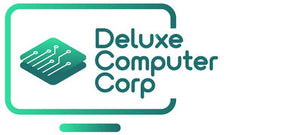Your cart is currently empty
Exploring the Heart of Your Computer: A Deep Dive into Computer Memory
Introduction
Have you ever wondered how your computer manages to process all the tasks you throw at it, from running complex software applications to browsing the internet? The magic behind this incredible feat lies in the computer's memory. In this blog, we'll take you on a journey to explore the vital role of computer memory, shedding light on the different types, how they work, and why they're essential for seamless computing.
What is Computer Memory?
Computer memory is the core element that allows your computer to store, access, and process data. It's the digital equivalent of your brain's short-term memory, enabling your computer to quickly recall and work with information. There are various types of computer memory, each with a specific function in the overall operation of your machine. Here are some of the primary types:
-
RAM (Random Access Memory): RAM is often referred to as a computer's working memory. It is fast, volatile memory that stores data temporarily while the computer is running. When you open an application or a file, it is loaded into RAM for quick access, making your computer responsive and efficient.
-
ROM (Read-Only Memory): ROM, unlike RAM, is non-volatile and contains essential firmware and software instructions that your computer needs to start up. Your computer's BIOS (Basic Input/Output System) is an example of data stored in ROM.
-
Cache Memory: Cache memory is a small, high-speed memory that stores frequently accessed data. There are different levels of cache (L1, L2, and L3) built into your CPU, which help reduce the time it takes for the CPU to fetch and process data.
-
Virtual Memory: Virtual memory extends your computer's physical RAM. When RAM is exhausted, it temporarily uses space on your hard drive as an extension. This allows you to run more applications simultaneously, but it's much slower than physical RAM.
How Does Computer Memory Work?
Understanding how computer memory works can be quite complex, but let's simplify it. When you open an application, such as a web browser, your computer loads the necessary data from the storage drive (HDD or SSD) into RAM. This data includes everything the application needs to run, from the program code to images, text, and more.
Once the data is in RAM, the CPU can access it quickly, allowing for smooth and responsive computing. When you close the application, the data is removed from RAM to make room for new tasks.
Why is Computer Memory Essential?
Computer memory plays a pivotal role in the performance and capabilities of your computer. Here are some reasons why it's so essential:
-
Speed: RAM and cache memory are incredibly fast, making data retrieval and processing lightning quick.
-
Multi-tasking: RAM enables you to run multiple applications at once, switching between them seamlessly.
-
Performance: The more RAM you have, the better your computer can handle resource-intensive tasks like video editing, gaming, and 3D rendering.
-
Stability: Virtual memory ensures that your computer doesn't crash when it runs out of physical RAM, preventing data loss.
Conclusion
Computer memory is the unsung hero that empowers your computer to handle the ever-increasing demands of modern computing. Whether you're browsing the web, editing documents, or playing video games, the various types of computer memory work together to provide a seamless user experience. Understanding how memory functions can help you make informed decisions when upgrading or maintaining your computer, ensuring it continues to be a reliable and efficient tool for years to come.



